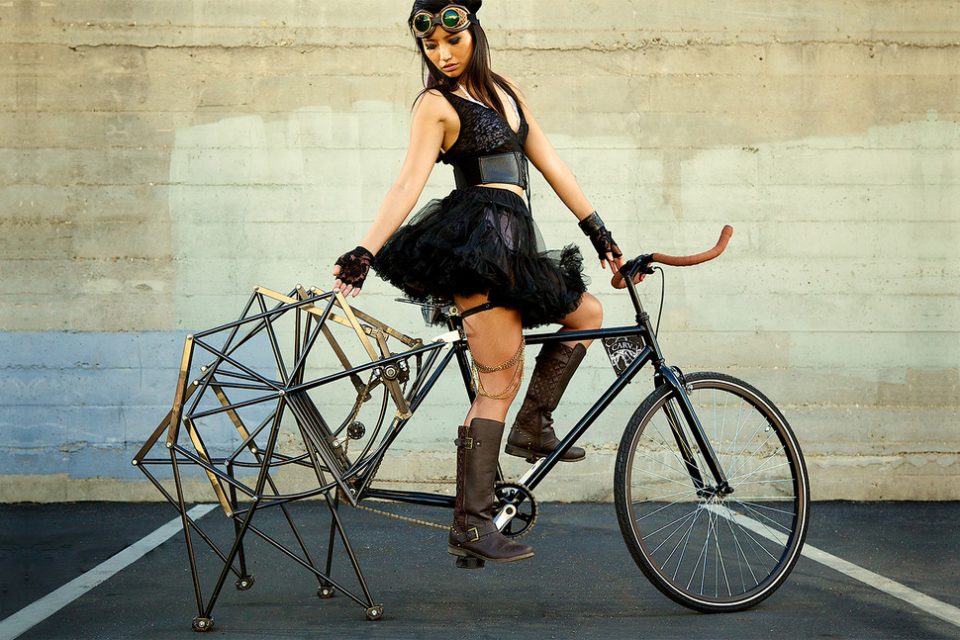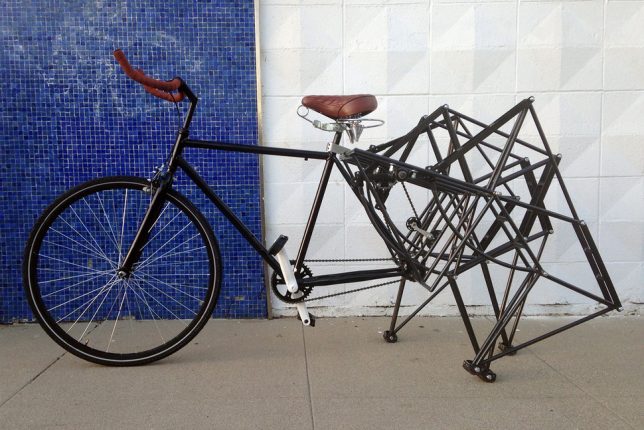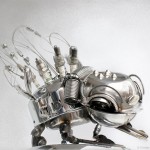 |
| The electronic Pentax ME Super can be picked up for a bargain price compared to the mechanical Pentax MX. Image: Say_Cheddar |
There are a lot of mechanical film camera snobs out there, and I’m one of them. There’s something about the way a mechanical camera feels, that sensation of meshing gears and tightening springs that you can feel right in your fingers, which is just magical. To me, a camera that goes ‘KA-CLACK!’ will always be superior to one that goes ‘bzzzt.’
But I also know that electronic film cameras have key advantages over mechanical cameras, and those advantages don’t always get proper recognition. In fact, I’d argue that for many photographers and many situations, electronics are better. Here’s why.
Mechanical vs. Electronic: What do we mean?
Before we begin, some quick definitions: For the sake of our discussion, an all-mechanical camera is one that has no electronics in the shutter, exposure or film-winding mechanisms. It may have a light meter, but mechanically speaking, it’s fully functional without a battery.
An all-mechanical camera is fully functional without a battery
When we talk about electronic cameras, we either mean cameras with an electronically-controlled shutter, which still have manual focusing and winding, or cameras with electric/electronic everything, including shutter, exposure control, winder, and (usually) autofocus. Some electronic cameras will work at one shutter speed (usually the flash sync speed) with no batteries; for others, no power means no pictures. (Note that some cameras, like the Canon EF and Pentax LX, use a hybrid shutter with mechanical timing for fast speeds and electronic for slow speeds.)
Some electronic cameras will work at one shutter speed (flash sync) with no batteries; for others, no power means no pictures
Got it? Good! Let’s dive in and talk about the advantages of electronics, then we’ll revisit a few of the arguments in favor of mechanicals.
Why electronic cameras are better
 |
|
You’d be hard-pressed to spend more than $ 75 on an electronic Ricoh KR-10 with lens. |
Electronic cameras have fewer moving parts than mechanical cameras.
This is one of the main reasons camera manufacturers moved to electronics in the first place: The complexity of the mechanism is greatly reduced. Mechanical cameras are clockwork marvels, filled with minuscule gears, levers, springs, cords and chains – moving parts that can wear out, disengage, clog up or break. Electronic cameras replace a lot of these intricate bits with non-moving solid-state electronics, which are simpler, more robust and generally more reliable. From the manufacturer’s perspective, electronics make the cameras cheaper to build. From the photographer’s perspective, electronics mean fewer things to go wrong.
From the manufacturer’s perspective, electronics make the cameras cheaper to build. From the photographer’s perspective, electronics mean fewer things to go wrong
Electronic cameras rarely go out of adjustment.
One of the problems with a mechanical shutter-timing mechanism is that it’s subject to wear, degraded lubrication, and temperature variations. After a while, your 1/250 shutter setting no longer delivers a 1/250 second exposure. (Hence the ‘A’ in the common CLA service – cleaning, lubrication and adjustment.) With an electronic shutter, the timing is done by solid-state bits that are not prone to such discrepancies.
That’s not to say electronic shutters are always perfect; they still have moving parts that can be affected by dirty electromagnets or dried-up lubricant. But they tend to stay pretty darn close to the mark. If a forty-year-old electronic camera is working, it’s probably working correctly – and will likely be shooting more accurate than an older mechanical camera that hasn’t been serviced.
Electronic cameras can deliver more precise exposures than mechanical cameras.
With a mechanical camera, you’re generally locked into pre-set full-stop shutter speeds – 1/500, 1/250, 1/125, 1/60, etc. Same with an electronic camera in manual mode. But electronic cameras with an automatic exposure setting can take advantage of one of the key benefits of an electronic shutter: Infinitely variable speed settings. If the meter decides the ideal shutter speed is, say, 1/300 of a second, that’s how long the shutter will stay open. 1/75 sec ? No problem. 1/854 sec? Sure! They can fine-tune your exposure in a way that a mechanical camera can’t, which is especially critical if you’re shooting with slide or technical film.
 |
|
The electronic Nikon FE2 sells for about half the price of the mechanical FM2. |
Electronic cameras have faster top and sync speeds than mechanical cameras.
The camera with the fastest purely mechanical shutter I know of is the Nikon FM3A, which tops out at 1/4000th of a second, but that’s atypical; most mechanical cameras stop at 1/1000 sec, and some ‘pro’ models at 1/2000 sec. So did early electronic cameras, but advances in electronics and curtain materials meant faster speeds, and many electronic cameras top out at 1/4000 or (in very high-end models) 1/8000 sec. The speed champ is the Minolta Maxxum 9, which can snap off an exposure in 1/12,000 sec.
Fast shutters are usually associated with action photography, but they are handy for casual shooters as well: If you’re running 400 speed film and the sun comes out, you can still shoot at wide apertures. Electronic shutters also give you faster flash sync speeds, typically 1/125 sec to 1/250 sec versus 1/60 sec for most mechanical shutters. Again, that’s one or two more stops of flexibility, allowing you to use a wider aperture for outdoor portraits with fill flash.
Electronic shutters also give you faster flash sync speeds, typically 1/125 sec to 1/250 sec versus 1/60 sec for most mechanical shutters
Finally, my favorite:
Electronic cameras are usually less expensive.
Electronic cameras are the bargains of the used-film-camera market. Nikon’s all-mechanical FM2 typically sells for twice as much as its electronic-shutter counterpart, the FE2. Same for the mechanical Pentax MX and the electronic ME Super.
And the more electronic you go, the better the prices get. The Nikon N8008, a “prosumer” camera one notch below the vaunted F4, sold for $ 600-$ 800 when new, but today you can buy them for $ 10-$ 50. Minolta’s excellent Maxxum/Dynax autofocus cameras of the 1990s can easily be bought for $ 20-$ 50 in good operating order with a Minolta lens – not just the low-end consumer models, but fully-featured high-end cameras as well.
Why mechanical cameras are better
We’ve covered the advantages of electronic cameras. What about the arguments in favor of mechanical cameras? Let’s discuss a few.
 |
| A Nikon ad from the 80’s showing a mix of electronic, mechanical and hybrid cameras. Image: Nester |
Mechanical cameras work without batteries.
This is true, though I’ve personally never seen it as a real advantage (although I can understand how those who have found themselves on the losing end of a dying digital camera battery would). The story I’ve heard is of a professional photographer on a once-in-a-lifetime shoot atop an icy mountain. Suddenly their camera’s battery dies – but they have a mechanical camera, so they can go right on shooting! Fine – but that’s a niche use-case. Most of us aren’t going to be shooting regularly in situations where batteries degrade fast (like extreme cold) or in places where spares aren’t easily available.
The more likely explanation for the cult of the battery-less camera is that pros mistrusted electronics when they first came out, which is a natural human reaction to anything new and unfamiliar. Within a few years, once they realized that electronics were not evil, those same professionals were relying on battery-reliant cameras like the Nikon F4/F5 and Canon EOS-1.
All-mechanical cameras are fabulous beasties and a treat to use. But manual-wind, manual-focus cameras with electronic shutters give you most of that same feel.
Besides, while it’s true a mechanical camera will work without the batteries, its meter won’t, and who wants to shoot without a meter? Sure, you can use an external meter/phone app or ‘Sunny 16’, but there’s no need for a fallback when spare batteries are cheap and easy to carry. Remember that electronic cameras that use button batteries go years on one set, and autofocus cameras that use AAs or lithium ions should give you a few dozen rolls and a warning before the batteries die. So yes, this argument is valid, but I don’t think it’s very relevant.
Mechanical cameras are more repairable.
There is some truth to this. One of the reasons older electronic cameras can fail is that their flexible printed circuit boards can crack with age. When new parts aren’t available, repair shops rely on donor cameras, which may have the same age-related issues. But not all problems with electronic cameras are insoluble – some repairs require a bit of soldering, and other failures are mechanical, not electrical, and involve the same types of issues to which mechanical cameras are prone.
Even if a given camera cannot be repaired, remember those low replacement costs. I’ve had two cameras cleaned and repaired at a cost of around $ 100 each– worth it for more expensive cameras. But if it’s my Minolta 400si or Ricoh KR-10 that breaks, for that same $ 100 I could buy 3 or 4 replacement bodies in working condition.
Mechanical cameras have more ‘soul’.
You’ll get no argument from me there. All-mechanical cameras are fabulous beasties and a treat to use. But manual-wind, manual-focus cameras with electronic shutters give you most of that same feel. And while autofocus, auto-wind cameras don’t feel the same, using them is a unique experience that I have grown to appreciate.
 |
| The mechanical Pentax MX (shown with accessory grip) is a joy to shoot with. Image: Wikipedia |
Bottom line
Mechanical cameras are great, and they have their advantages, and disadvantages. Electronic cameras, meanwhile, are the unsung heroes: They are generally cheaper to buy, more likely to give you accurate exposures, and if they aren’t always easily repairable, they are usually easily (and cheaply) replaceable. There’s a reason all camera manufacturers embraced electronics. We, as film photographers, ought to embrace them as well.
Articles: Digital Photography Review (dpreview.com)









































You must be logged in to post a comment.